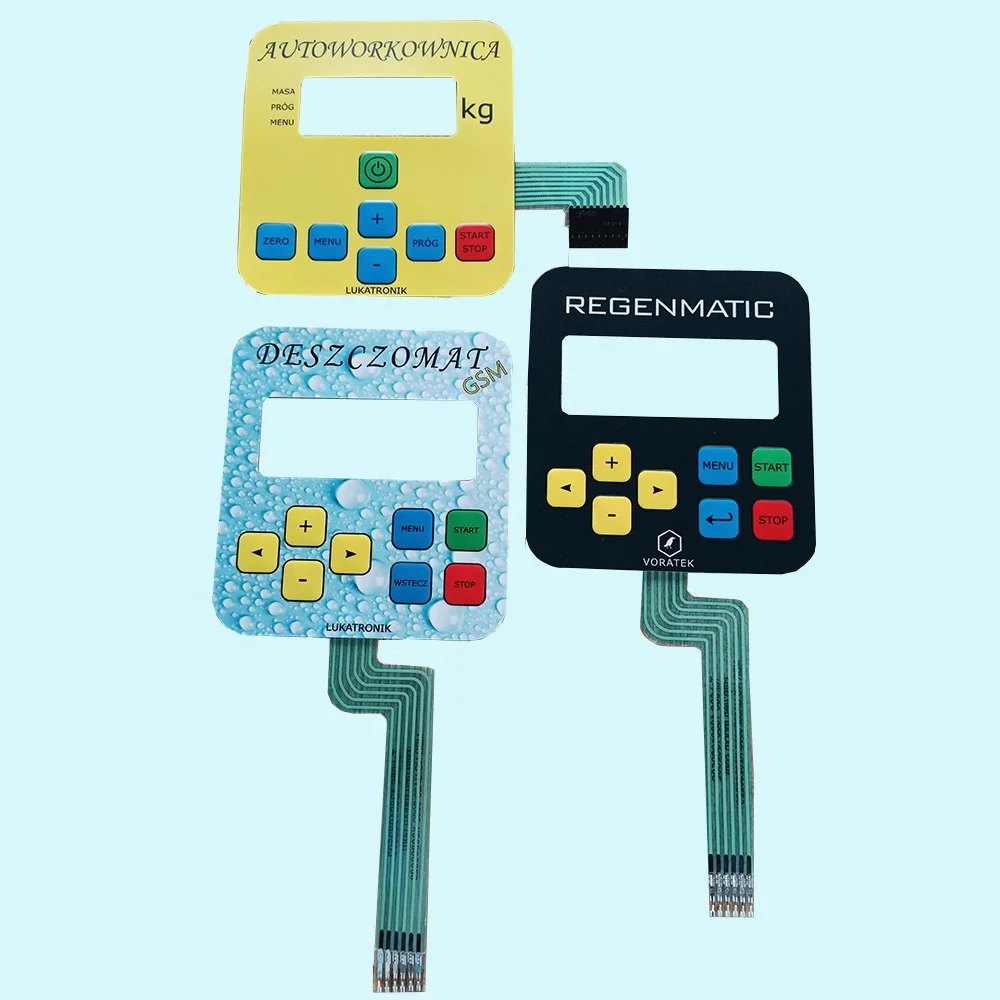Why Membrane Switches are Ideal for Durability and Performance
Why Membrane Switches are Ideal for Durability and Performance
Blog Article
Understanding Membrane Layer Switches: The Secret to Reputable and durable Controls

What Are Membrane Layer Buttons?
Membrane layer buttons are a sophisticated service in the world of customer interface modern technology, combining capability and layout seamlessly. These devices serve as an interface in between individuals and digital systems, incorporating numerous parts right into a portable layout. Typically constructed from flexible, thin layers of materials, membrane switches are designed to respond to touch, allowing users to interact with equipment and electronic gadgets successfully.
The key elements of a membrane layer button include a printed circuit layer, graphic overlay, and a spacer layer that stops unintentional activation. The graphic overlay can be tailored to reflect brand name identification or user choices, enhancing visual appeals while making certain usability. Membrane layer buttons are frequently used in different applications, including clinical gadgets, consumer electronics, and commercial devices, owing to their sturdiness and resistance to environmental factors such as dampness and dirt.
One of the key benefits of membrane buttons is their capacity to stand up to deterioration, making them perfect for high-traffic settings. In addition, they are light-weight and require marginal area, permitting for innovative layouts in product growth. Generally, membrane switches over represent a practical and effective choice for modern-day electronic user interfaces, marrying modern technology with user-centric style concepts.
How Membrane Layer Switches Job
The operation of membrane layer switches hinges on a straightforward yet efficient device that translates customer input into digital signals. These buttons consist of numerous layers, generally consisting of a graphic overlay, a spacer layer, and a circuit layer. When an individual presses the button, the top layer warps, permitting a conductive element in the circuit layer to make call with a corresponding conductive pad on the bottom of the visuals overlay. This contact closes the circuit and sends a digital signal to the gadget, showing that the button has been turned on.
The style of membrane layer buttons can differ, yet they frequently integrate domes or responsive components to give feedback to the user, enhancing the general experience - membrane switch. The materials utilized in membrane layer buttons, such as polyester or polycarbonate, add to their sturdiness and resistance to ecological aspects, including moisture and dirt. The published circuits are commonly encapsulated, which secures them from wear and tear over time.
Advantages of Membrane Layer Buttons

Additionally, membrane buttons are known for their longevity. Constructed from robust products, they are immune to dust, moisture, and physical wear, which dramatically extends their life-span contrasted to conventional mechanical switches. This resilience makes them especially suitable for high-traffic atmospheres and applications requiring long life.
Another significant benefit is the convenience of cleansing and maintenance. The smooth surface of membrane layer switches reduces dirt build-up and is typically unsusceptible spills, making them suitable for setups that require frequent sanitization.
Additionally, membrane switches supply a streamlined profile, leading to a thinner design that can be incorporated right into different devices without adding mass. This function not only enhances the visual charm however also contributes to an extra ergonomic item design.
Applications of Membrane Layer Buttons
User-friendly and functional, membrane layer this content switches locate applications throughout a vast array of industries, consisting of clinical gadgets, customer electronic devices, and industrial tools. In the medical field, these buttons are essential to devices such as analysis equipment, person tracking systems, and infusion pumps, where integrity and simplicity of cleansing are important. Their capability to withstand rough atmospheres and maintain capability makes them optimal for such applications.

In consumer electronic devices, membrane layer switches are utilized in items like microwaves, washing makers, and remote controls - membrane switch. Their smooth design enables for instinctive interface, improving the total user experience while offering durability and resistance to tear and put on
Industrial devices additionally gains from membrane switches, especially in control panels for machinery and automation systems. These switches supply defense against dirt and dampness, making sure regular efficiency in challenging atmospheres. Their adjustable functions enable suppliers to customize them to details functional demands, boosting performance and capability.
Picking the Right Membrane Layer Switch Over
When picking a membrane layer button, it is necessary to consider various factors that influence performance and viability for details applications. The main factors to consider include environmental conditions, responsive comments, toughness, and style specs.
First, evaluate the operating environment; switches revealed to wetness, chemicals, or extreme temperatures call for details products to guarantee durability and functionality. Next off, assess the need for responsive feedback. Depending upon user communication, some applications might gain from a responsive action to verify activation, while others might like a non-tactile style for visual factors.
Toughness is one more crucial variable; membrane buttons must be developed to withstand regular usage, effects, and abrasion. Ensure the chosen button can sustain the expected lifecycle, specifically in high-usage situations.

Final Thought
In final thought, Visit Your URL membrane layer switches offer as essential elements in the layout of resilient and trusted control systems throughout various markets. The convenience of membrane changes enables for customized solutions that meet certain functional demands, reinforcing their importance in contemporary innovation.
Membrane layer switches represent a vital facet of modern-day user interface design, blending performance with durability in different applications.Membrane layer switches are an innovative solution in the realm of user interface innovation, integrating performance and style flawlessly. Typically constructed from flexible, thin layers of materials, membrane layer buttons are designed to respond to touch, enabling users to interact with equipment and digital tools article properly.
The layout of membrane layer buttons can vary, however they typically integrate domes or tactile aspects to offer feedback to the user, enhancing the total experience.In verdict, membrane layer changes serve as vital elements in the design of reliable and durable control systems throughout numerous markets.
Report this page